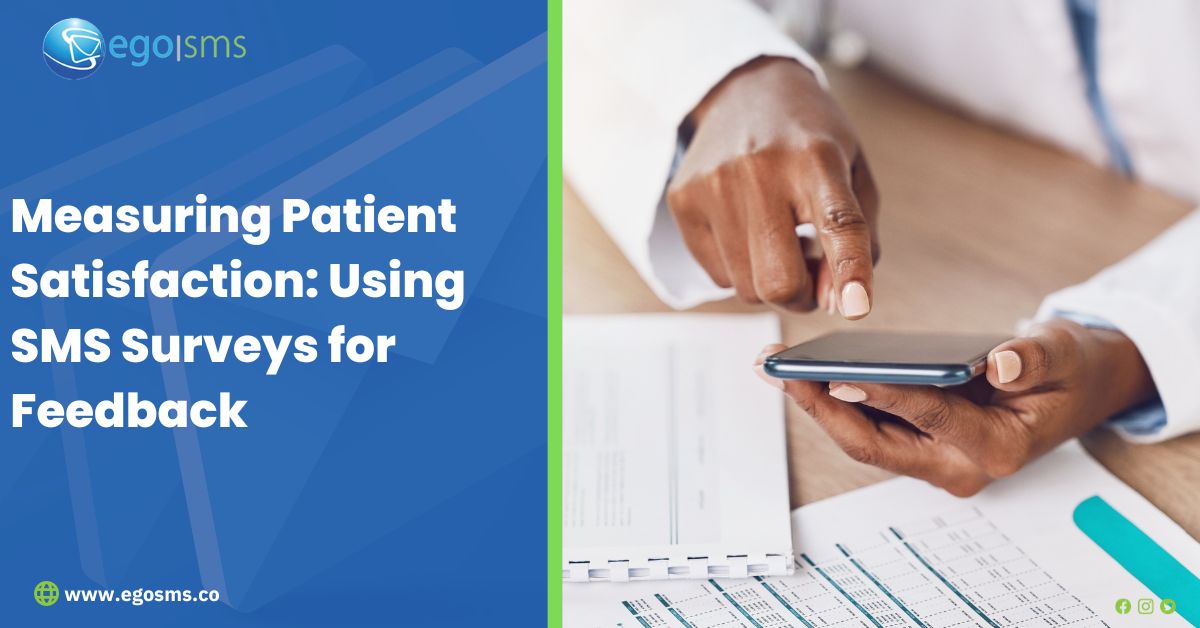
Patient surveys in hospitals offer numerous benefits for healthcare facilities and patients alike. They offer a wealth of benefits, including improved patient care, increased patient satisfaction, and a means to drive positive change within healthcare organizations. These surveys are an important tool for hospitals to assess and enhance the quality of care they provide.
Here are some of the key advantages of conducting patient surveys in hospitals:
- Improvement of Patient Care: Surveys provide valuable insights into the patient experience, allowing hospitals to identify areas where care and services can be improved. This leads to better patient outcomes and satisfaction.
- Patient-Centred Care: Surveys help hospitals tailor care to individual patient needs and preferences, fostering a patient-centred approach to healthcare.
- Quality Assessment: Surveys assess the quality of care provided by hospitals. They measure clinical outcomes, communication, staff courtesy, and other aspects that contribute to overall quality.
- Identification of Areas for Improvement: Surveys help hospitals pinpoint specific areas that need improvement, such as reducing wait times, enhancing staff training, or improving facility cleanliness.
- Enhanced Communication: Surveys encourage open communication between patients and healthcare providers. Patients can express concerns or praise, and hospitals can respond to feedback to build trust and transparency.
- Reduced Litigation Risk: Addressing patient concerns through surveys can help hospitals mitigate the risk of malpractice lawsuits. It demonstrates a commitment to improving care and addressing issues promptly.
- Increased Patient Satisfaction: By addressing patient feedback and making improvements based on survey results, hospitals can boost overall patient satisfaction, which can have a positive impact on their reputation and patient loyalty.
- Competitive Advantage: Hospitals that consistently receive positive feedback from patient surveys can use this information to market themselves as preferred healthcare providers in their community.
- Staff Development: Survey results can be used for training and professional development of healthcare staff. This can lead to a more knowledgeable and empathetic healthcare team.
- Data-Driven Decision Making: Surveys provide quantitative and qualitative data that can inform evidence-based decision-making for hospital management and strategy.
- Resource Allocation: Survey results can guide hospitals in allocating resources more effectively. For example, they can allocate more staff to departments with consistently low patient satisfaction ratings.
- Community Engagement: By seeking feedback from patients and responding to their concerns, hospitals can engage more actively with the local community and build trust with patients and their families.
- Continuous Improvement: Patient surveys promote a culture of continuous improvement within healthcare organizations, as they encourage regular feedback and response mechanisms.
- Benchmarking: Hospitals can compare their survey results to national or industry benchmarks to gauge their performance relative to others and identify areas for improvement.
Measuring patient satisfaction is crucial for healthcare providers to improve the quality of care and patient experience. Using SMS surveys for feedback is a convenient and efficient method to collect patient opinions and assess their satisfaction. Here’s a guide on how to do it effectively:
- Define Your Objectives: Determine what specific aspects of patient satisfaction you want to measure. Is it the overall experience, the quality of care, wait times, or specific services? Having clear objectives will help in creating focused survey questions.
- Compliance with Regulations: Ensure that your SMS survey method complies with healthcare regulations such as the KCCA Public Health Act in Uganda. Patients’ privacy and data security should be a top priority.
- Develop the Survey Questions: Create concise and relevant questions that address your objectives. Keep the survey short and straightforward to increase response rates. Include both closed-ended questions with rating scales and open-ended questions for qualitative feedback.
- Pilot Test: Before deploying the survey to a wider audience, pilot test it with a small group of patients to identify any issues with clarity or wording. This will help in refining the survey.
- Segment Your Patients: Consider segmenting your patients based on their experience or specific interactions with your healthcare facility. This can help you tailor questions and identify areas that need improvement for each group.
- Timing and Frequency: Choose the right time to send SMS surveys. For example, sending surveys shortly after a patient’s appointment can yield more accurate feedback. However, avoid sending surveys too frequently to prevent survey fatigue.
- SMS Delivery and Collection: Select an SMS survey platform or software that allows for easy and automated survey distribution. Ensure that it integrates well with your patient management systems. Collect and store responses securely.
- Incentives: Consider providing small incentives, such as discounts on future services or healthcare-related gifts, to encourage patients to participate in the surveys.
- Data Analysis: Analyze the survey data to identify trends and areas that need improvement. Quantitative data from rating scales can provide a numerical overview, while qualitative feedback can offer valuable insights.
- Act on Feedback: Use the survey results to make improvements in your healthcare services. Share the feedback with the relevant departments and develop action plans to address areas of concern.
- Communication: Share the results and changes made as a result of patient feedback with your patients. Transparency can enhance trust and satisfaction.
- Continuous Improvement: Patient satisfaction is an ongoing process. Regularly review and update your SMS surveys and adapt to changes in healthcare practices and patient expectations.
- Monitoring Trends: Track patient satisfaction trends over time to measure the impact of your improvements and to ensure that patient satisfaction remains a priority.
- Benchmarking: Compare your patient satisfaction scores with industry benchmarks to gain a broader perspective on your performance.
Using SMS surveys for patient feedback can be an effective and efficient way to gauge patient satisfaction and make improvements accordingly. Regularly collecting and acting upon patient feedback is a fundamental aspect of delivering high-quality healthcare services. To get started on SMS surveys for your health care centre, Sign up for EgoSMS here.

